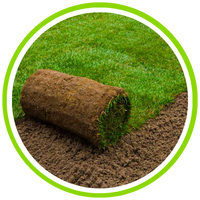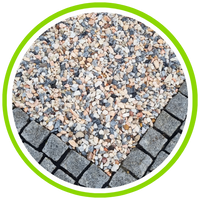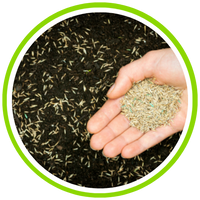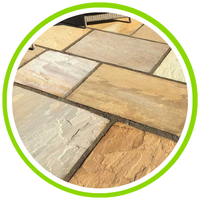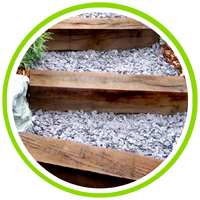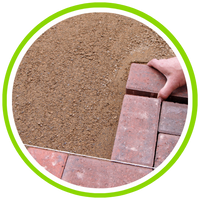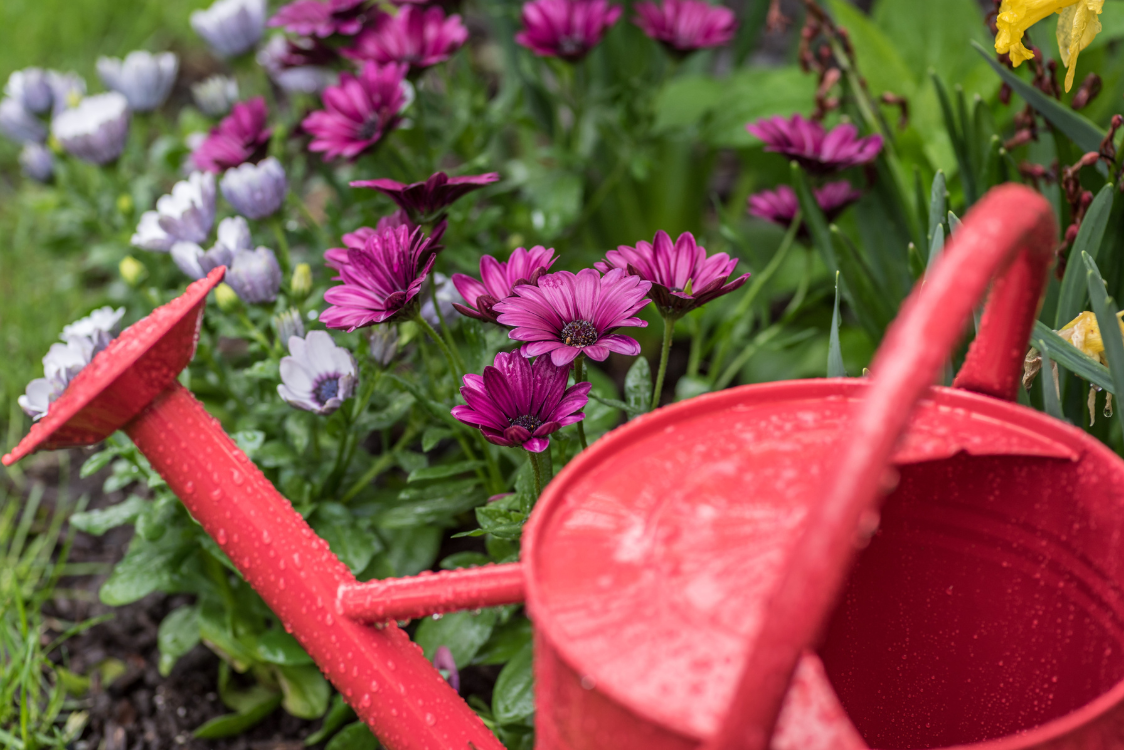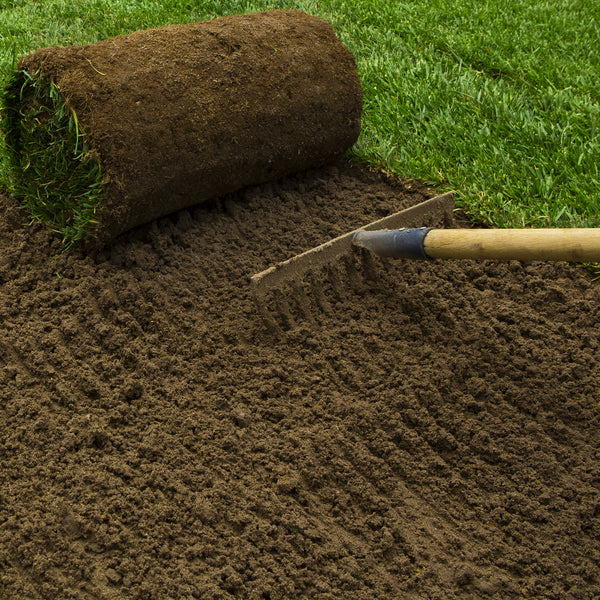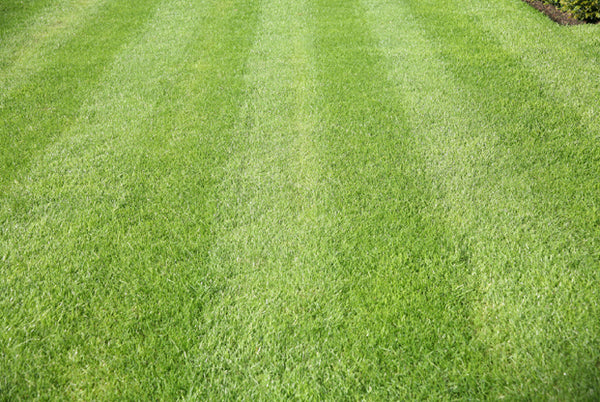APRIL is National Lawn & Garden Month!
Check out our tips and suggested products to help you get the most out of your garden this April...
Contents:
- Lawn Maintenance
- The Vegetable Guide
- Amazing Beds & Borders
- Showers & Sunshine
We'd also love to hear what you'll be up to in the garden this month, comment below!
Lawn Maintenance

Topdressing
April is the perfect time to topdress an existing lawn. Use our Dandy's Topdressing Sand and Soil mix to add light material to the surface of the lawn before re-seeding and feeding. Brush over your grass at a depth of 1-2mm ready for re-seeding and feeding. Topdressing has a number of benefits including controlling thatch, drainage, and smoothing the lawn surface - all in great time for a lovely lush Summer lawn!
Lay new Lawn Turf
Sometimes you just need a fresh start! Laying a new lawn doesn't need to be a daunting task, follow our How to Guide and you could instantly transform your garden.
Check out our turf laying guide here !
We stock fresh, lush turf all year round - simply measure up (length m x width m = square metres) and you can order online here.
Don't forget to add a fresh layer of Dandy's Lawnmix Topsoil.
Remove moss
Moss can develop when your soils pH is lowered. To completely remove moss from your lawn can including replacing the topsoil (our Lawnmix Topsoil is perfect for this) or aerating and topdressing the affected area (see above).
Remove your existing moss with a rake so that you are not creating divots in your lawn. Reducing watering will assist in removing the moss as it thrives in a moist environment.
Here at Dandy's we like to keep things natural and organic and advise that you follow these tips, however or a quick fix you can buy moss-killer or add soap and water to the affected areas to kill off persistent moss growth!
Mowing
The most obvious, and one of the most important, over-looked maintenance task over spring is regular mowing! Mowing regularly keeps the lawn in good health. At this time of year you should be looking to get the lawn mower out about once a week at the highest height setting. The height can be gradually reduced each week as the weather improves and the grass becomes stronger; avoid excessively close mowing as it can weaken the grass, encouraging shallow rooting and making the lawn more susceptible to drought, weeds and moss.
The Vegetable Guide
Whether you're a seasoned vegetable grower or you're brand new to this we've got some handy tips and advice about April growing!
April is a tricky month for deciding whether to sow or not. The temptation is to tear open your new seed packets - but outdoors that’s still risky with our good old British weather! It’s wiser to sow seeds in pots kept indoors on a windowsill or in a greenhouse. Then you can gradually harden them off next month and safely plant them out in early June.
Check List
Bark Mulch and Weed Suppressant
Mini Sleepers (for building raised beds)
Sowing and Planting
Tomatoes & Aubergines
April is probably your last chance to sow seeds indoors before planting out tomatoes and aubergines - any later and the plants will have too short a growing season for fruits to ripen outdoors.
DANDY TIP - use an old pallet to make your own Herb Garden!
Broad Beans & Peas
General Care
-
Support pea plants with sticks, twigs, green support mesh, or wire netting.
-
Thin out rows of seedlings as soon as they are large enough to be handled.
-
Protect early outdoor sowings with a layer of mulch, such as our Hardwood Chips. A 2 to 4 inch layer around your vegetable plants will suppress weeds, maintain soil moisture, reduce watering, moderate soil temperature, improve soil health, and keep vegetables cleaner. A vegetable plot must!
- Feed the soil - adding peat free compost to your existing soil will give it a healthy boost of nutrients. Don't forget to top up each season to get the best results.
- Enjoy your veggies! Harvest as soon as your vegetables are ripe. Pop harvested plants on the compost pile.
Amazing Beds & Borders
Beautiful beds and borders can turn your garden from average to amazing! Preparation is everything when it comes to getting your borders just right. Whether you're expanding or refreshing your existing beds or starting fresh we have a few Dandy hints and tips to help you out...
Check List
Shape your garden...
You may be tempted to simply follow the fence line or your garden to make your borders, which is fine if you're after clean straight modern lines, however adding a few curves will soften the edges and can make the space look larger!
Gently sweeping curves are best but avoid wavy edges as they can be difficult to maintain and can look untidy.
...and then raise it up!
DANDY TIP... Whether you choose straight, raised or curved the key is to make your borders wide enough. Wider borders are easier to work with as they will give your plants the space to grow and you won't have to keep cutting them back. We suggest you go for less planting areas but make them bigger!
Make sure there's enough space in your bed or border for larger trees or shrubs as planting these can we useful for use as a screen from neighbouring properties.
Creating a brand new border?
If the area of your new bed or border is part of your existing lawn then the first job is to remove the turf. When you have marked out the area cut around it using a sharp spade and lift the turf away horizontally - if you are unsure about the area you've marked then start cutting further back than you wanted... it's easier to take away more grass than put it back!
You can edge your new bed or border with rockery stone, sleepers, granite sets or even something quirky or recycled like shells or tyres!
Next add topsoil or compost to your new border...
Adding plenty of compost to your existing soil will help improve the texture of the soil, add nutrients and make it easier for your plants and flowers to get established. Soils that are rich in organic matter hold onto water too so less time spent with the watering can!
Our Dandy's Spent Mushroom Compost (horse and chicken manure) or Organic Peat Free Compost are great soil improvers - for best results roughly dig in, leave for a few days and then fork it over, ready for planting.
If your soil is clay based or compacted we suggest you go for our Soil Improver Composted Fines.
If you opt for a raised bed you will need to fill it up with topsoil and compost - our Dandy's Bordermix Topsoil is a pre-mixed blend of compost, manure and topsoil.
When building a raised bed on concrete or flags you will need to incorporate a drainage system first. Simply add broken pots, rocks or stones/gravel at the base, typically a few inches, along with some sand and then top up with your topsoil. You will most likely only plant into the top 8 inches or so of a deeper planter or raised bed so anything below this can act as a part of the drainage system.

Get planting…
Combine a few species of plants, shrubs and perennials to give your garden scheme more variation. Adding height to the back (or closest to your fence or perimeter) will naturally drawing the eye and make your garden appear bigger. Plant-out straight borders or raised beds with equally spaced smaller shrubs or flowers to keep it modern and easy to maintain. Or for a more natural appearance add a mix to your larger bed or curved border - the key is to compliment size, texture and colours. Don't forget to consider that some species may grow quicker and larger than others and this could mean a fight for sunlight.
Add a mulch and 'ta-da'!
No border would be complete without a topping of gravel, slate or garden bark mulch. Adding material over the top of your completed border not only acts as a weed suppressant but can also add nutrients, retain water and give your garden a lovely finish.
Check out our decorative gravels or natural garden mulches - don't forget your anti-weed membrane!
Showers & Sunshine
"April Showers bring May flowers!" - make the most out of the wet weather this April. Believe it or not a bit of rain this time of year is good thing - with lots of sunshine and showers you should now see your trees, shrubs and flowers springing to life!
Sort out your existing plants and flowers
Late April the soil is warming up so now is a great time to get outside and plant with confidence. Divide late-flowering perennials now, if you haven’t done it for a few years. They will enjoy a boost of growth from being lifted, split and replanted, and will have time to settle back in before they flower.
Give your garden a boost
If you haven't done so already this year it's not too late to add a much needed boost of nutrients to your existing soil - our Dandy's Multi Purpose Peat Free Compost is perfect and available in small bags and bulk bags!
Start a Sunflower growing competition!
Now is the perfect time of year to get your sunflowers competition off to a great start. This is a great way to get the kids involved and introduced to gardening.
Lots of sun, not too much heat and a bit of rain means your sunflowers will soon sprout! Don't forget to get some canes or sticks to support your crop. Sunflowers grow best in locations with full sun. They are remarkably tough and will grow in any kind of soil as long as it is not waterlogged. They do fine in soils that are slightly acidic to somewhat alkaline (pH 6.0 to 7.5) so our Dandy's Multi Purpose Topsoil is perfect.
Deadhead those flowers
Deadheading flowers and plants is an all year task but doing it at prime growing times such as April or May is a must - not only will it maintain the plant's appearance but also improve it's general performance... meaning a neat and tidy, healthy garden! Remove faded daffodil and tulip flowers, nipping off the heads and seed pod at the same time. Deadhead pansies, primulas and other spring bedding plants. Most annuals and perennials will continue to bloom throughout the growing season if they are regularly deadheaded.
Watch out for pests
Aphids can multiply rapidly during mild spells. Remove early infestations by hand to prevent the problem getting out of hand. Continue to protect lilies, delphiniums, hostas and other new shoots from slugs and snails.
DANDY TIP - pop crushed egg shells around the base of your plants and flowers to humanely deter snails and slugs!




